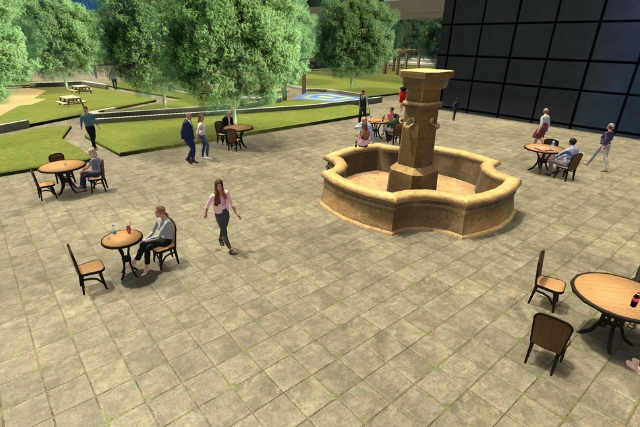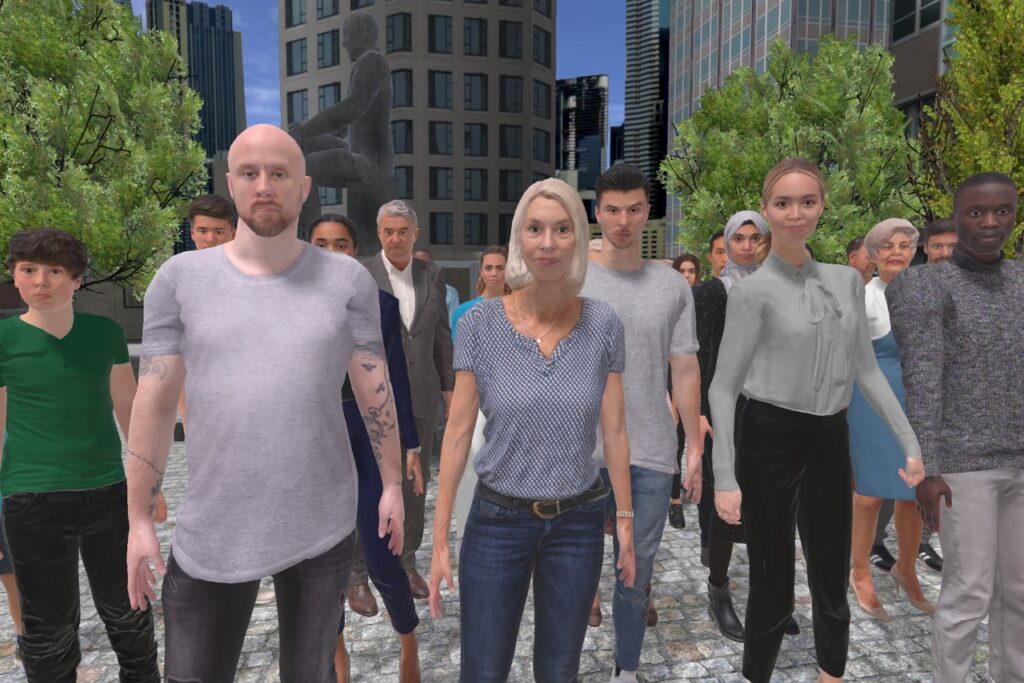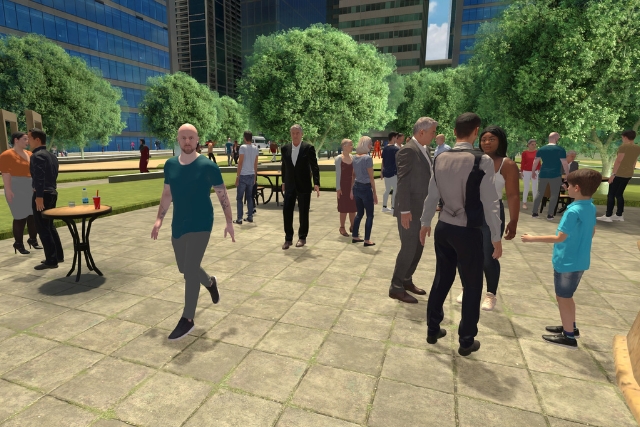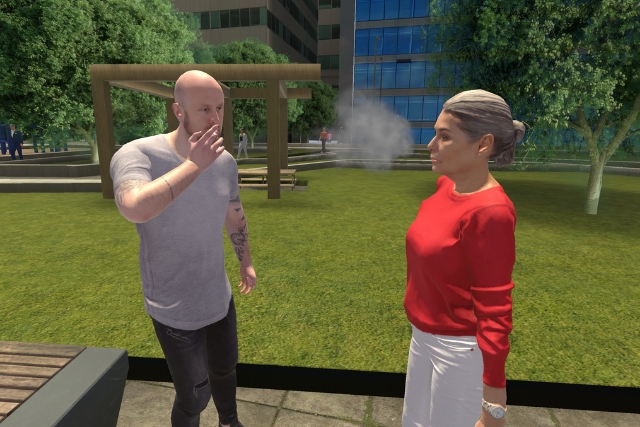Why such efficacy ?
1. Immersion
The user will be immersed in virtual environments designed to recreate everyday anxiety-inducing situations.
2. Cognitive restructuring
The user will unlearn negative reactions, such as catastrophic thoughts (“Something bad will happen to me”), and rebuild positive thought patterns.
3. Repetition
Through repeated exposures, these patterns will become quickly and permanently ingrained in your mental functioning.
4. Progressiveness
The gradual increase in the difficulty of the environments will allow the user to progressively desensitize to the anxiety experienced and regain confidence in their abilities.
5. Personalization
With Artificial Intelligence, they will be supported and encouraged in a personalized way throughout the exposures.
Receive the C2Care method for free, combining Artificial Intelligence and Virtual Reality !
The AI revolution !
Relaxation against anxiety !
Generalized anxiety disorder

Generalized anxiety disorder
Generalized Anxiety Disorder (GAD) is characterized by excessive and constant anxiety, often without a specific cause, that can take control of daily life. It manifests as intrusive thoughts, difficulty relaxing, and physical symptoms like muscle tension, insomnia, or chronic fatigue. This disorder makes even the simplest tasks stressful and significantly impacts emotional and physical well-being.
By exposing themselves to tailored scenarios and learning to manage emotions, individuals can regain balance and enjoy a lighter, more fulfilling daily life.
Depression
Depression is a complex disorder marked by persistent sadness, a loss of interest in daily activities, and constant fatigue. It may be accompanied by difficulty concentrating, sleep disturbances, and a profound sense of discouragement. Anxiety can exacerbate the emotional and mental exhaustion associated with depression, making simple activities even more challenging.
Through personalized exercises, individuals can gradually expose themselves to daily situations, rebuild self-confidence, and reconnect with a more fulfilling life.
Depression

Attention deficit hyperactivity disorder

Attention deficit hyperactivity disorder
Attention Deficit Hyperactivity Disorder (ADHD) is a neurodevelopmental disorder characterized by difficulties maintaining attention and impulsive behavior. It can impact school, work, and social life. Symptoms, often visible in childhood, include frequent forgetfulness, a lack of focus, and a tendency to act without thinking.
Tailored approaches help individuals structure their routines, improve social interactions, and develop essential skills, enhancing their autonomy and daily quality of life.
Relaxation
Virtual reality offers a unique approach to promoting relaxation by immersing users in soothing and immersive environments. Natural landscapes such as a sunny beach, a serene forest, or a crackling fireplace create a setting conducive to relaxation and escape. These multisensory experiences help reduce tension, relieve stress, and restore a state of serenity.
Relaxation


Whether it’s to calm stress, release tension, or facilitate gentle sleep, our artificial intelligence guided meditation sessions cater to every need by offering varied scenarios. Each session is designed to provide a personalized experience and a unique moment of relaxation. This innovative approach creates opportunities for deep relaxation, accessible to everyone at any time.
By immersing themselves in environments tailored to their needs, users can work on their emotions and behaviors. They are placed in everyday stressful situations to improve stress management and strengthen their ability to adapt to unforeseen events. With personalized support that respects their own pace, individuals gradually regain confidence in themselves and reconnect with a more fulfilling life.

Lives changed thanks to our method.
An approach based on CBT (Cognitive Behavioral Therapy)
Based on the cognitive-behavioral approach, our solutions help deconstruct limiting thought patterns and rebuild confidence in one’s abilities.
By recreating realistic virtual environments, exposure enables individuals to confront their fears or stressful situations while being supported. It allows for safe, controlled, and gradual exposure to anxiety-provoking or phobic situations.
They testify to the effectiveness of C2Care !

Léa - User

Dr Redwan - Psychiatrist
The advantage is that you can precisely control the virtual environment, adjust the stimuli, adapt to the needs of the patient. There is the notion of safety that is very important, which can help them to take a step forward because they feel safer to face their fears.

Karine - User
My anxiety was everywhere, whether it was going out, meeting people or even being alone. Thanks to C2Care’s immersive programs, I was able to identify and deal with the situations that triggered this anxiety. In a few months, I found a more peaceful and balanced daily life.

Laura - User
Following a repetitive trauma in my childhood, I am anxious about everything. I am afraid of everything, I limit myself in many of my activities and I am very unhappy. So I wanted to take control of myself, and I found this solution that helps me, little by little, to feel more comfortable.

Jordan Fannis - Psychologist
I saw in the field what it brings to my patients, satisfaction, and then with a little bit of gamification, we enjoy going to work. It creates a kind of connection between my patients and me.

Florian - User
An effective therapy with a very attentive and caring team. Thank you for everything. I recommend.
Do you need further information or have any specific questions ?
Our environments in image











